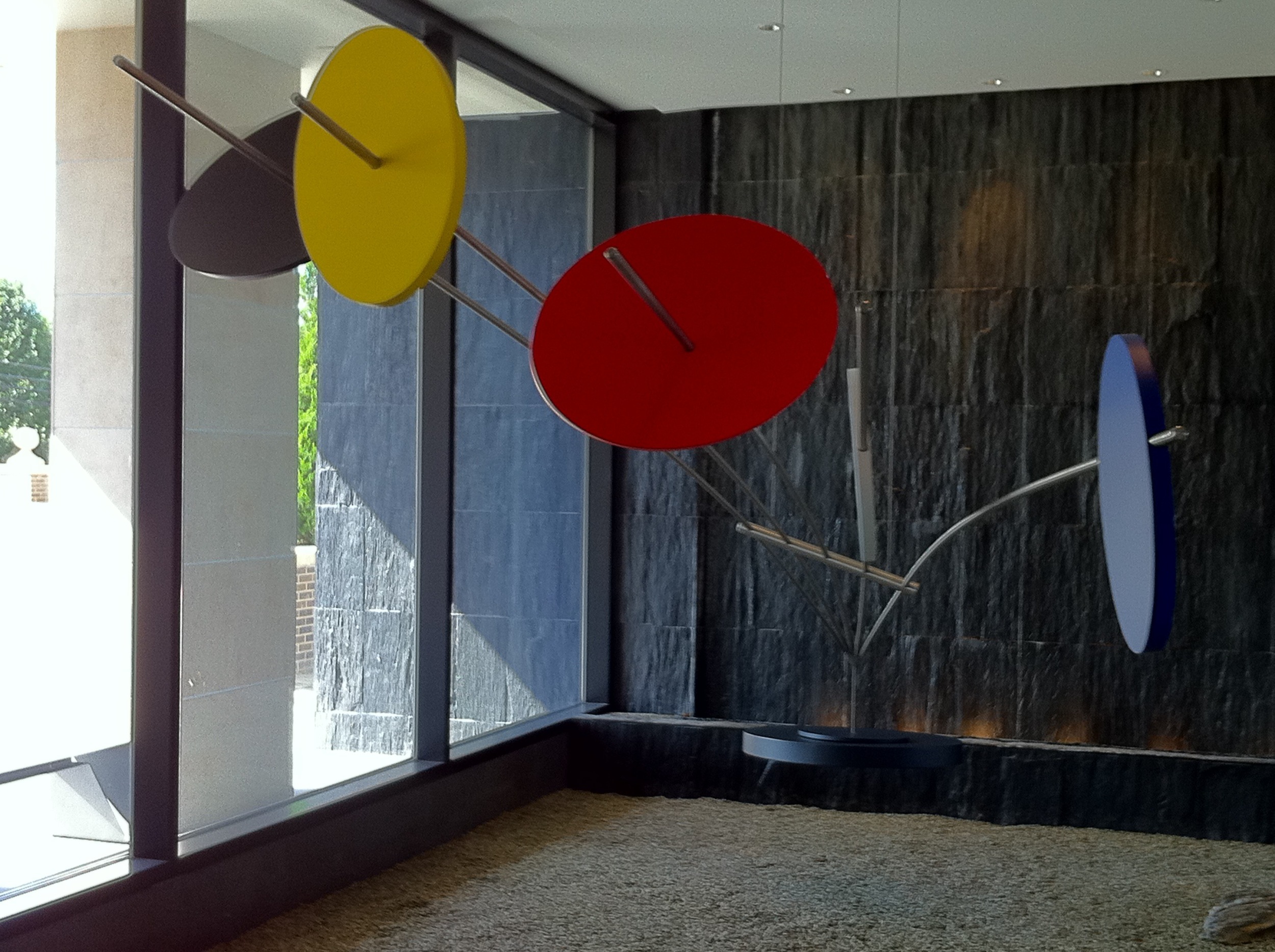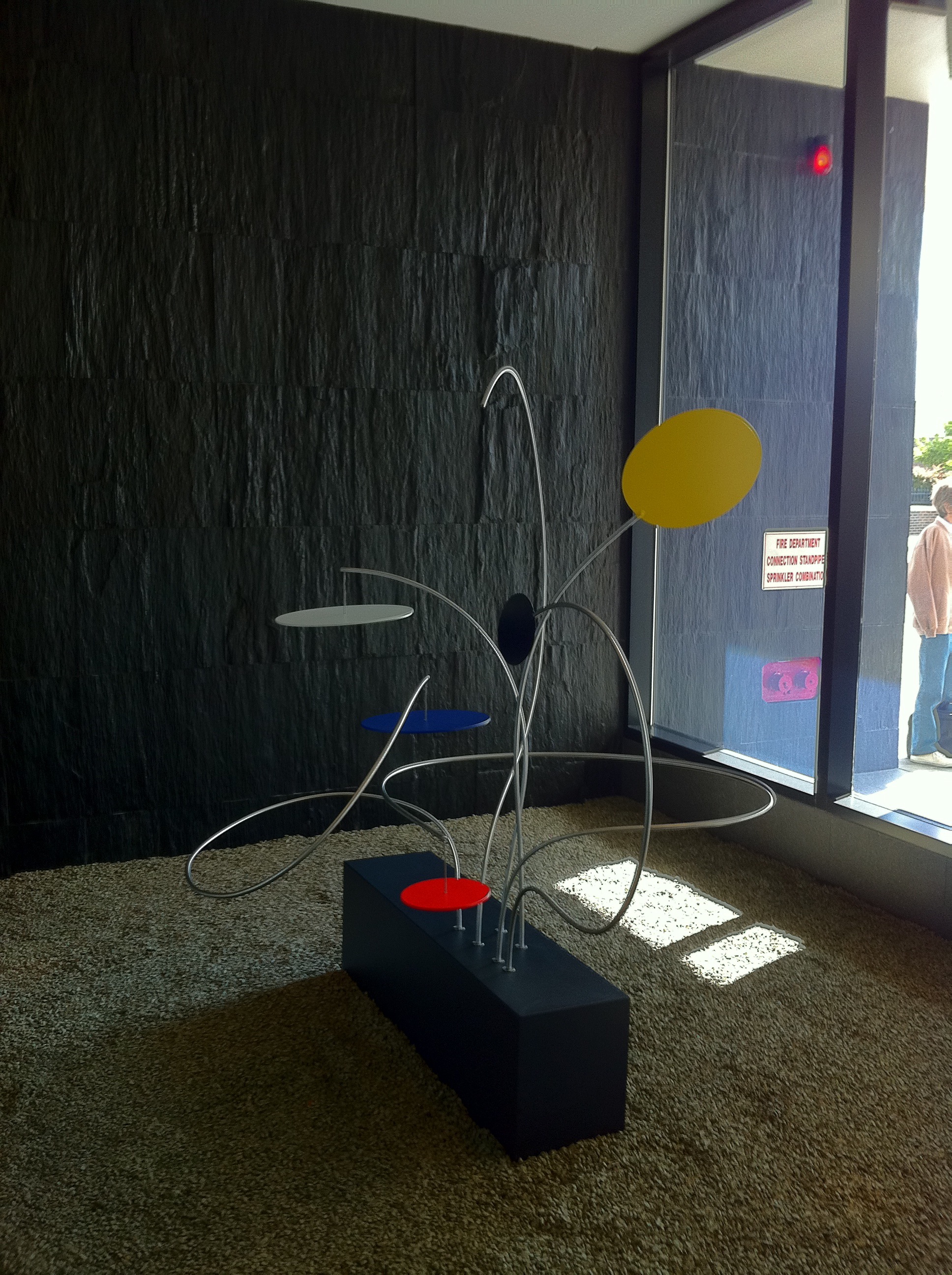We've been busy busy lately churning out stabiles to replenish the shelves at Design Within Reach. Along the way, we decided to experiment with ways to streamline production. For example, we like to powder coat our shapes (because it saves us painting time and creates a superior finish), but things always bottleneck pre-powder coating: we need to individually mast off each area we don't want painted, plus protect each part for transit.
So we created this gizmo:
It's a metal frame lined with a silicone material—similar to flexible bakeware—that can withstand the high temperatures of powder coating. It securely holds 52 mobile components, protecting them during transport and cleaning, while masking off the area we want unpainted.
We sent a batch loaded into this contraption alongside a batch of parts taped off with good-old tape.
The verdict?
The taped-off parts were easier to deal with, less bulky to transport, and created a nicer finish.
*sigh* Back to the drawing board...














